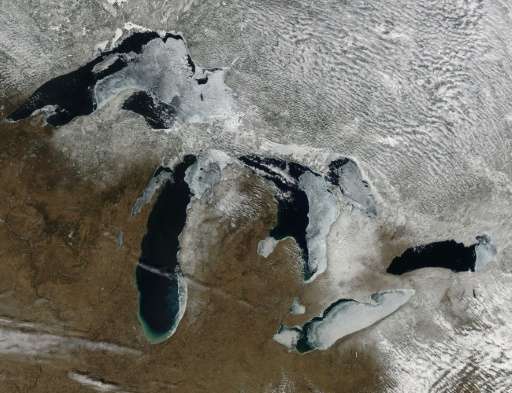This March 17, 2015 NASA satellite image shows ice on the Great Lakes bordering the US and Canada
Ninety-two-thousand people have pressed Ottawa to reject a proposal to store nuclear waste in an underground vault near the Great Lakes, fearing a spill would contaminate this source of drinking water for 40 million in Canada and the United States.
A 6,000-page petition signed by opponents of local utility Ontario Power Generation's proposal to store waste in a deep limestone vault to be drilled beneath the world's largest operating nuclear power plant on the Bruce Peninsula, more than 200 kilometers northwest of Toronto, was delivered to Environment Minister Catherine McKenna, her office confirmed Thursday.
McKenna is expected to rule on the project in March after an independent review panel in May 2015 recommended that it be approved.
Ontario Power Generation says the rock at this location is impermeable and has been stable for 450 million years, and thus is ideal for storing radioactive waste, which can take millions of years to decay.
OPG spokesman Neil Kelly said, "Public health and safety will be protected."
But critics reject their assurances, and say any risk of contamination of the largest group of freshwater lakes, created by retreating glaciers 14,000 years go, and containing more than 20 percent of the world's surface fresh water, is too great.
Cities and towns in the United States and Canada, including Chicago and Toronto, have passed 184 resolutions opposing the building of a nuclear waste repository here.
"No scientist, nor geologist can provide us with a 100,000-year guarantee that this nuclear waste dump will not leak and contaminate the Great Lakes," Beverly Fernandez, who spearheaded the campaign against the storage facility, told AFP.
"So when we found out that OPG was trying to locate this nuclear waste right besides the Great Lakes—the drinking water for 40 million people in two countries—we felt compelled to do something," she said.
© 2016 AFP























